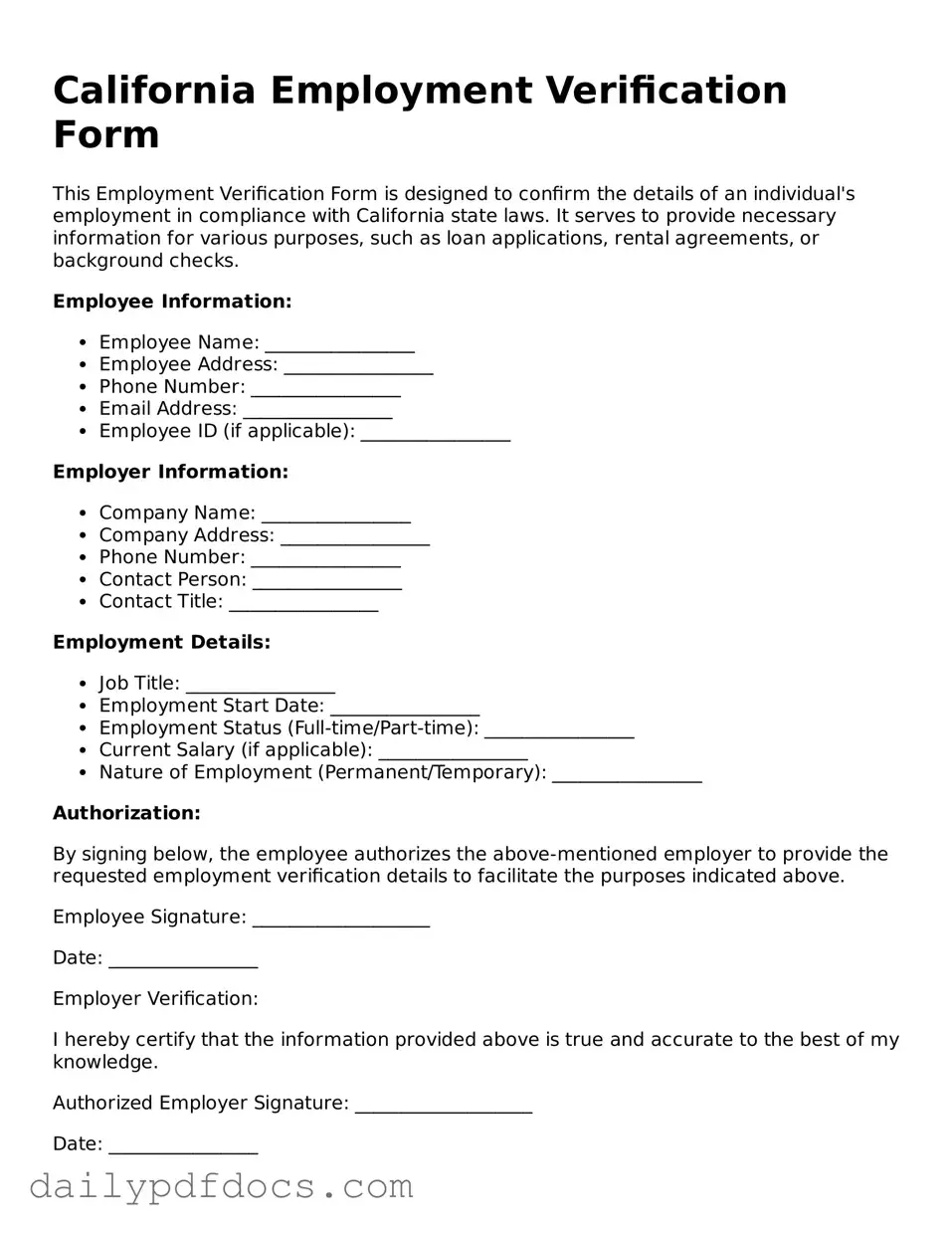What is the California Employment Verification form?
The California Employment Verification form is a document used by employers to confirm an individual's employment status. This form helps verify details such as job title, duration of employment, and salary information. It is often required for purposes like applying for loans, renting apartments, or other situations where proof of employment is necessary.
Who needs to fill out the Employment Verification form?
Typically, the form is filled out by employers at the request of an employee or former employee. The employee may need it for various reasons, such as applying for a mortgage, renting a home, or verifying income for government assistance programs. It can also be requested by third parties, such as lenders or landlords, to ensure that the information provided by the employee is accurate.
What information is required on the Employment Verification form?
The form generally requires basic information about the employee, including their name, job title, and dates of employment. Employers may also need to provide details about the employee's salary or hourly wage, as well as the nature of their job duties. Some forms may ask for additional information, such as the reason for leaving the job, if applicable.
Is the Employment Verification form mandatory?
How can I obtain the Employment Verification form?
Employees can typically request the Employment Verification form from their employer's human resources department. Many companies have a standardized form available for this purpose. If your employer does not have a specific form, you can create a simple letter requesting verification of your employment, and your employer can fill it out accordingly.
What should I do if my employer refuses to complete the form?
If your employer refuses to complete the Employment Verification form, it is advisable to first understand their reasons. They may have policies in place that limit the information they can share. If the refusal seems unjustified, consider discussing the matter with your HR department or a supervisor. If necessary, you may seek legal advice to understand your rights regarding employment verification.
Can the information on the Employment Verification form be disputed?
Yes, if you believe that the information provided on the Employment Verification form is inaccurate, you have the right to dispute it. Start by discussing the discrepancies with your employer. They may be willing to correct any errors. If the issue cannot be resolved internally, you may need to gather documentation to support your claims and consider legal avenues for resolution.
How long does it take to process an Employment Verification request?
The processing time for an Employment Verification request can vary significantly based on the employer's policies and workload. Generally, it may take anywhere from a few days to a couple of weeks. To expedite the process, it is helpful to provide your employer with all necessary information and to follow up politely to ensure your request is being addressed.
